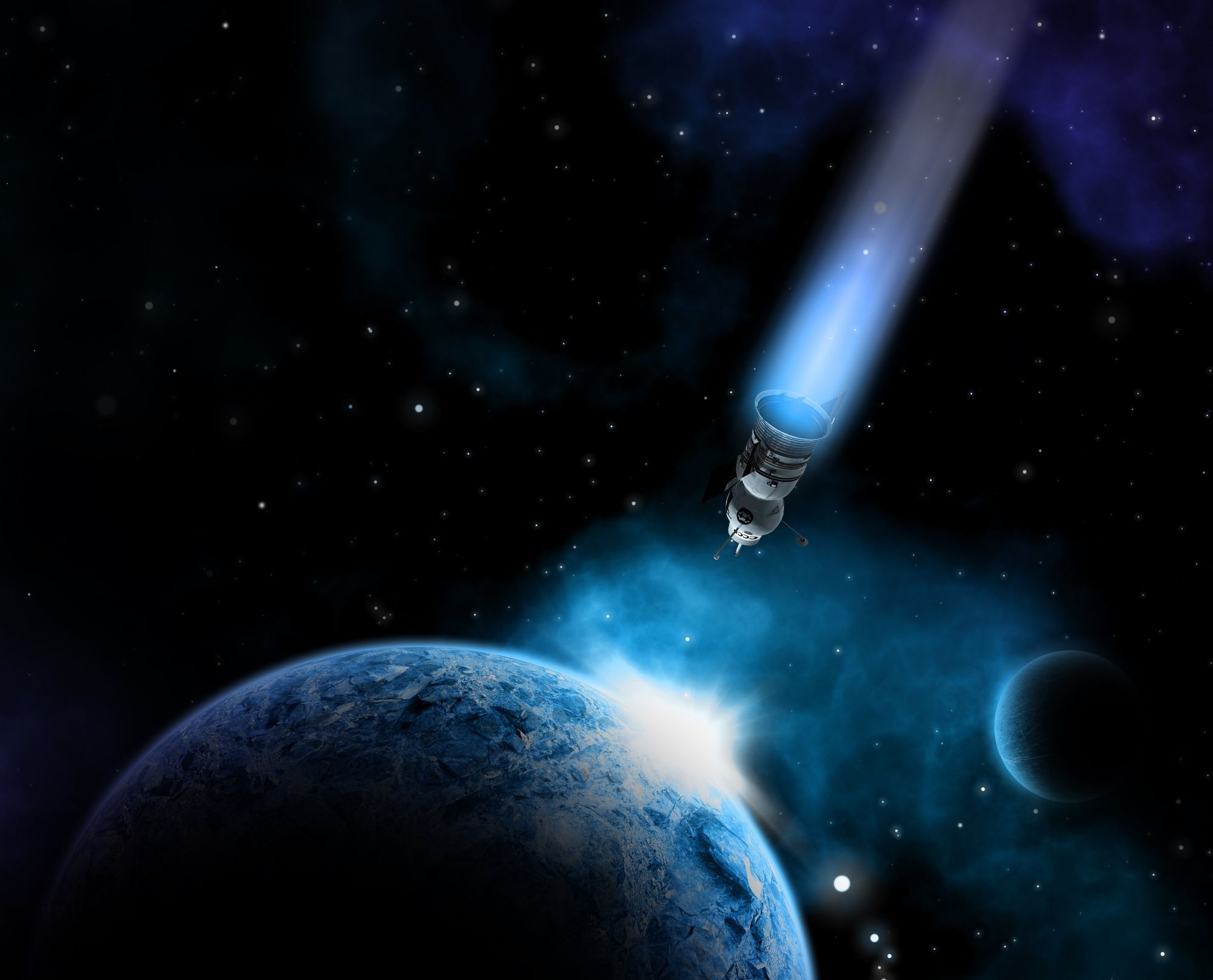Orbital Decay Simulation
Orbital decay simulator for the LEO spacecraft lifetime estimation.
Results:
| Lifetime (days) | |
| Required DV to deorbit (m/s) | |
| Orbit lifetime: | |
Notes:
The simulator is valid for the altitudes <1000 km.
Perturbations included: Astmospheric drag (U.S. Standard Atmosphere 1976), solar radiation pressure (SRP), third body effect (sun&moon)
Reference:
https://github.com/sammmlow/ORBITM
Decay simulator / Reentry calculator / Orbit Lifetime tool
The orbital decay simulator, or satellite reentry calculator, is a tool used to predict when a satellite or other orbiting object will reenter the Earth's atmosphere and burn up. This is an important consideration for space agencies, satellite operators, and other organizations that launch objects into orbit, as uncontrolled reentry can pose a risk to people and property on the ground.
To predict when an object will reenter, the simulator takes into account several factors, including the object's altitude, eccentricity of its orbit, its mass and size, the atmospheric density at its altitude, and its ballistic coefficient. As the object moves through the atmosphere, it experiences drag forces that cause it to lose energy and gradually spiral down towards the Earth's surface. The simulator calculates the rate of this decay and estimates the object's remaining lifetime in orbit.
Satellite reentry calculators are used to ensure that spacecraft are deorbited in a controlled manner to reduce the risk of uncontrolled reentry. The calculators can also be used to track and predict the reentry of space debris, which can pose a risk to other spacecraft in orbit. By providing accurate predictions of reentry time and location, these tools help improve space situational awareness and ensure the safety of objects in space and on the ground.
Orbital perturbations
Orbital perturbations refer to changes in the trajectory of an object in orbit around another celestial body, caused by gravitational influences from other objects or variations in the central body's gravitational field. These perturbations can cause the object's orbit to deviate from the ideal, two-body trajectory predicted by Newton's laws of gravitation.
The most significant source of perturbations is the gravitational influence of other objects in the vicinity of the orbiting object. For example, in the Earth's orbit around the Sun, the gravitational pull of the Moon and other planets causes perturbations in the Earth's orbit. These perturbations can cause changes in the Earth's orbital inclination, eccentricity, and the orientation of its orbit.
Another source of perturbations is variations in the gravitational field of the central body. The Earth, for example, has a slightly non-uniform gravitational field due to the variations in its density and shape. This can cause small perturbations in the orbits of objects in low Earth orbit. Other factors that can cause orbital perturbations include atmospheric drag, solar radiation pressure, and relativistic effects.
Understanding and accounting for these perturbations is important for predicting the long-term stability of objects in orbit, such as satellites, and for ensuring the accuracy of spacecraft navigation. Advanced computational methods, such as numerical integration using Runge-Kutta methods (Online RK4 Orbit Propagator), are used to model and predict the effects of perturbations on an object's orbit.
Online orbital decay simulator
The orbital decay simulator is a valuable tool for astronomers, satellite operators, scientists, and other experts.

Prediction of satellite reentry: Satellite reentry calculator can predict the date and time when a satellite or other object in orbit is likely to reenter the Earth's atmosphere and burn up. This can help satellite operators and other experts plan for the end of a satellite's life, and ensure that it does not pose a risk to people or property on the ground.
Assessment of orbital decay: The orbital decay simulator can also be used to assess the rate of orbital decay of a satellite, and predict its remaining lifetime in orbit. This information can help satellite operators plan for end-of-life disposal or repositioning of the satellite.
Tracking of space debris: The reentry calculator can be used to track the reentry of space debris, which can pose a risk to other satellites and spacecraft in orbit. By predicting when and where space debris is likely to reenter, satellite operators can take measures to protect their own spacecraft and ensure mission success.
Analysis of atmospheric drag: The orbital decay simulator can be used to study the effects of atmospheric drag on spacecraft and other objects in orbit. This information can be used to improve spacecraft design and predict the lifetime of future satellites.
Understanding of orbital mechanics: The reentry calculator can also be a useful tool for scientists and experts studying orbital mechanics. By analyzing the behavior of satellites and other objects in orbit, they can gain a better understanding of the dynamics of the Earth's atmosphere and gravitational field.
In summary, free online orbital decay simulator helps astronomers, satellite operators, scientists, and other experts to better understand and predict the behavior of objects in orbit, and to ensure the safety and success of missions in space.